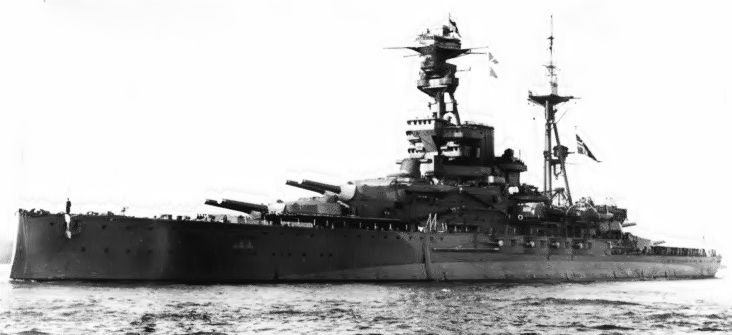Sinking of the Royal Oak
Charles Phipps, of Marsh Gibbon, and Peter Rouse, of Hardwick, were both serving on HMS Royal Oak during World War II when she was torpedoed and sunk by a German Uboat. Charles was an 18 year old Able Seaman. Peter was a Boy and just 16 years old. He was the 3rd youngest of 14 children born to William and Lucy Rouse.
The Royal Oak, a 600 foot long 29,000 ton Dreadnought battleship, was the last battleship built at Devonport Dockyard in Plymouth and had been in service since she was built for the Royal Navy in 1916. She served at the Battle of Jutland in World War One when her 40,000 horse-power engines could achieve speeds in excess of 20 knots, but by 1939 she had difficulty keeping up with the more modern ships and was posted to the north east corner of Scapa Flow to provide anti-aircraft cover.
Shortly after midnight on 14th October 1939, German U boat U-47 navigated though an undefended gap in Kirk Sound and into the natural harbour of Scapa Flow. Fortunately all ships but the Royal Oak had left just a few days before.
U-47 fired her first salvo of torpedoes and scored a minor hit on Royal Oak’s bow. But the second salvo scored three perfect hits amidships. Royal Oak listed heavily to starboard as explosions ripped her open, seawater rushed in and balls of ignited cordite raced through the ship incinerating most of the crew. Within ten minutes she turned over and sank.
As skilfully as he had entered, Gunther Prien, commander of U-47, left Scapa Flow and returned to Germany for a heroes welcome, he would later be awarded the Iron Cross. 833 of the 1234 men and boys aboard ship died in the attack that day. The war was just six weeks old and Britain had already suffered a major loss, in a place that had been considered impregnable to submarine attack.
Today the wreck of the Royal Oak, a designated war grave, lies just 5 metres below the surface. In an annual ceremony to mark the loss of the ship, Royal Navy divers place a White Ensign at her stern.



